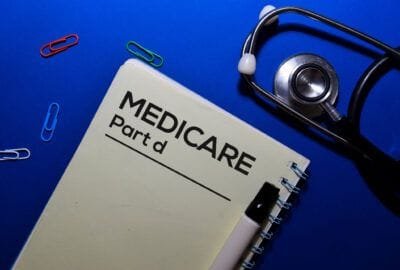Medicare Part D: A Breakdown
Medicare Part D is the U.S. government’s prescription drug coverage program for Medicare beneficiaries. It helps seniors and eligible individuals afford essential medications through private insurance plans.

Eligibility Criteria
– Age requirements: Individuals aged 65 and older are eligible for Medicare Part D.
– Residency criteria: Beneficiaries must be U.S. citizens or legal residents.
– Enrollment periods: Enrollment occurs during the Initial Enrollment Period (IEP) or Annual Enrollment Period (AEP), with exceptions for Special Enrollment Periods (SEP).
Coverage Options
– Stand-alone Prescription Drug Plans (PDP): Separate plans for drug coverage, compatible with Original Medicare.
– Medicare Advantage Prescription Drug Plans (MA-PD): Bundled plans providing medical and drug coverage from approved private insurance companies.
Understanding the Coverage Gap "Donut Hole"
– After reaching a spending threshold, beneficiaries enter the coverage gap and pay a percentage of drug costs.
– Cost-saving tips during the coverage gap include exploring generic drugs and patient assistance programs.
Formularies and Drug Tiers
– Part D plans categorize drugs into tiers based on cost, affecting out-of-pocket expenses.
– Understanding drug tiers helps manage medication expenses effectively.
How to Choose the Right Plan
– Consider medication needs, preferred pharmacies, and plan costs when choosing a Part D plan.
– Utilize online tools and Medicare’s Plan Finder for informed decision-making.
-Talk to a qualified professional… LIKE US! -> Contact Here
-Here is another resource
Enrolling in Medicare Part D
– Initial enrollment period: Starts three months before turning 65 and extends for seven months.
– Special enrollment periods: Certain circumstances qualify for special enrollment opportunities.
– Late enrollment penalties: Delayed enrollment may lead to permanent premium increases.
Another article that goes over Part D LINK
FAQ'S
What happens if I don't enroll in Medicare Part D?
If you don’t enroll in Medicare Part D when you are first eligible, and you don’t have other creditable prescription drug coverage (such as through an employer or union), you may face a late enrollment penalty. This penalty is added to your premium and stays with you as long as you have Medicare Part D coverage. It’s essential to enroll during your Initial Enrollment Period (IEP) to avoid this penalty and ensure you have access to affordable prescription drug coverage.
Can I switch plans during the year?
Yes, you can switch Medicare Part D plans during the Annual Enrollment Period (AEP), which typically runs from October 15th to December 7th each year. During this period, you can compare plans, evaluate your medication needs, and choose a new plan that better suits your requirements. Remember to consider formulary changes, costs, and preferred pharmacies when making your decision.
Are all prescription drugs covered?
Each Medicare Part D plan maintains a formulary, which is a list of covered prescription drugs. While these plans must cover a wide range of medications, the specific drugs covered can vary from one plan to another. It’s essential to review the formulary of the plan you’re considering to ensure it includes the medications you need.
How do I appeal a coverage decision?
If you disagree with a coverage decision made by your Medicare Part D plan, you have the right to appeal. The appeals process allows you to ask your plan to reconsider its decision. You may file an appeal if your plan refuses to cover a prescription drug, denies a request for an exception, or imposes a coverage restriction. Follow the instructions provided by your plan to initiate the appeal process.
Is financial assistance available for low-income individuals?
Yes, there are various financial assistance programs available to help low-income individuals with their Medicare Part D costs. One such program is Extra Help (Low-Income Subsidy), which provides assistance with premium payments, deductibles, and copayments. To check if you qualify for Extra Help or other assistance programs, you can contact Social Security or your State Medical Assistance (Medicaid) office.
Remember, staying informed and understanding your options can ensure you make the most of your Medicare Part D coverage and receive the medications you need at an affordable cost. Check out some of the other FAQ’s HERE
